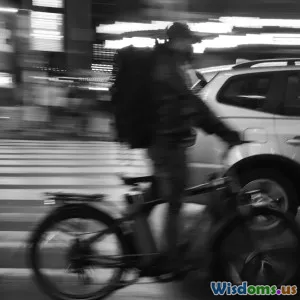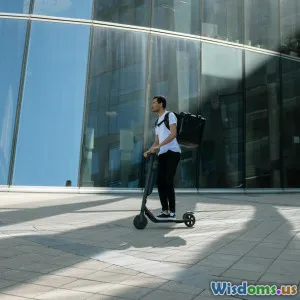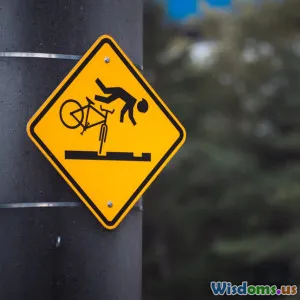
The Real Barriers to Widespread Electric Bike Use in Suburbia
12 min read Exploring the overlooked challenges hindering widespread electric bike adoption in suburban areas and how they can be overcome. (0 Reviews)
The Real Barriers to Widespread Electric Bike Use in Suburbia
Electric bikes, or e-bikes, have surged in popularity worldwide, hailed as a cleaner, healthier, and often faster alternative to traditional cars and public transit. Cities like Amsterdam and Portland, Oregon, showcase thriving e-bike cultures, where bikes sometimes outnumber cars. Yet in many suburban communities, e-bike use remains surprisingly limited despite clear benefits like reduced emissions, less traffic congestion, and improved personal health.
Why does this promising technology struggle to gain footing in suburbia? The answer lies in multiple, nuanced barriers that go beyond simple availability or technology. This article explores the real, often overlooked challenges stalling widespread e-bike adoption in suburban neighborhoods. By understanding these hurdles—from infrastructure shortcomings to cultural attitudes—we can better design policies, products, and community strategies to accelerate the e-bike revolution in the suburbs.
1. Introduction: Suburbia's Unique Transportation Landscape
Suburbs, by design, differ markedly from urban cores. They often feature lower population densities, spatially separated residential and commercial zones, and infrastructures built primarily for car travel. Car ownership rates are high—about 92% of U.S. households own a vehicle, and suburban households typically own more per family compared to urban ones. This automobile dependence is deeply entrenched, with many suburban residents anticipating a car in their driveway as a necessity, not a luxury.
From a transportation innovation perspective, suburbs pose a unique challenge: long distances and sprawling layouts do not naturally lend themselves to small-scale, low-speed vehicles like e-bikes. Meanwhile, public transit options are often limited or infrequent, creating a reliance on cars for commuting, errands, and social trips.
Yet, with growing concerns about climate change, air pollution, traffic congestion, and rising fuel costs, the question remains—can e-bikes carve a viable niche in the suburban transport mix? And if not, what barriers stand in the way?
2. Infrastructure Deficiencies: The Foundation Problem
Lack of Safe, Connected Bike Lanes
Perhaps the single largest infrastructural barrier is the scarcity of safe, continuous bike lanes in suburban neighborhoods. Unlike cities where investment in cycling infrastructure has increased, many suburbs lack dedicated bike paths, forcing riders to share roads with faster cars or navigate sidewalks not designed for bike safety.
Statistics from the U.S. Department of Transportation show that suburbs reported bike-related injuries at an alarming rate higher than urban areas when normalized for population—largely attributed to insufficient protective infrastructure. For instance, suburbs in states like Texas and Florida, with sprawling, car-centric designs, see over 60% of their cyclist crashes happen on arterial roads without bike lanes.
Without safe and reliable bike routes, residents naturally hesitate to switch from cars to e-bikes, fearing injury or inconvenience. Especially for families with children or older adults, this safety concern is a critical deterrent.
Inadequate Bike Parking and Charging Facilities
E-bikes require secure parking and access to charging at home, work, or public spaces. While cities have started installing e-bike charging stations and secure racks, many suburbs have lagged in adapting to these needs.
In neighborhoods lacking multi-family housing, dedicated bike parking is scarce since garages and driveways prioritize cars. The absence of designated charging access points at workplaces or shopping centers also limits e-bike use for longer trips.
Example: A survey of suburban office parks in the Midwest revealed that less than 10% provided any e-bike charging infrastructure. This forces commuters to revert to traditional transport modes.
3. Cultural and Social Perceptions: The Image Challenge
Cars as Symbols of Status and Freedom
In many suburban communities, cars remain deeply entwined with social identity and status. Owning a vehicle, especially a larger one like an SUV or pickup truck, signals economic success and autonomy. In contrast, biking—electric or not—is sometimes unfairly viewed as a lower-status mode, perceived as a fallback for those without cars.
Anecdotal interviews conducted by transport sociologists reveal that many suburban e-bike owners keep their hobby private to avoid social stigma. One respondent in a Denver suburb said, "People assume I bike because I can’t afford a nice car, but I love my e-bike."
Misinformation and Lack of Awareness
Beyond social stigma, misinformation about e-bike capabilities and legal status hinders adoption. Some suburbs restrict e-bike use on sidewalks or trails due to concerns they travel ‘too fast,’ creating confusion for would-be riders. Others overestimate e-bike costs or underestimate their range and ease of use.
A 2022 Pew Research study highlighted that 45% of suburban respondents were unsure if e-bikes require licenses or registration—often deterring trial.
4. Economic Barriers: Upfront Costs and Perceived Value
High Purchase Prices
Quality e-bikes typically range from $1,200 to $5,000+, with premium models exceeding $10,000. For many suburban families budgeting car payments, mortgages, and daily expenses, an expensive e-bike ranks lower on spending priorities.
While government incentives exist in states like California and New York offering rebates up to $1,500 for e-bike purchases, these programs are uneven or absent in many suburban-heavy states, limiting accessibility.
Maintenance and Replacement Costs
E-bikes require battery replacements every few years ($400–$800), periodic maintenance of electrical and mechanical systems, and insurance in some cases. These ongoing costs contribute to perceptions that owning an e-bike might be more expensive than it actually is over the long term.
Consider this: a standard new car costs on average $46,000 (2024 data) including insurance and fuel yearly, whereas most e-bikers report annual operating costs under $500—yet this economic advantage is often drowned out by upfront sticker shock.
5. Climate and Geography: Natural Limitations
Suburban geographies vary widely, and some physical environments naturally impede e-bike use.
Topography and Distance
Suburbs nestled in hilly or mountainous regions (e.g., parts of California or Colorado) present physical challenges, though e-bikes with pedal-assist partially mitigate this. Still, long distances between home and essential services (>5 miles) deter casual cycling.
Weather Constraints
Areas with extreme temperatures, heavy snow, or extended rainy seasons see reduced year-round cycling rates. For example, suburbs in the upper Midwest experience months of snow and ice, making e-bike commutes seasonal.
This leads to reliance on cars for many months annually, reducing the perceived usefulness and value of e-bikes.
6. Policy and Regulatory Environment: Frameworks That Hinder
Zoning Laws and Local Regulations
Classic suburban zoning often separates residential areas from commercial or employment centers, resulting in long commutes that discourage cycling. Additionally, some local ordinances restrict e-bike speeds or where e-bikes may be ridden (sidewalks, trails), limiting their practical utility.
Lack of Comprehensive E-Bike Policies
Compared to progressive urban centers that fund bike-share programs and integrate e-bikes into public transit networks, many suburban districts lack coordinated policies to support or encourage e-bike infrastructure and education.
For instance, cities like Minneapolis offer e-bike grants and integration into transit services, but many suburban local governments have no such incentives or programming.
7. Safety and Liability Concerns
Perceived Increased Risk
Even with safety gear and lower speeds compared to motorcycles, e-biking can feel risky to newcomers. The higher speeds achievable on e-bikes—up to 20 mph for class 1 and 28 mph for class 3—may cause accidents when inexperienced riders share roads with automobiles.
Emergency Response and Liability
Questions persist about insurance liabilities in crashes involving e-bikes and motor vehicles. Many suburban riders hesitate to use public roads without clear legal frameworks protecting e-bike users, further suppressing ridership.
8. Real-World Examples and Lessons
Portland, Oregon: Suburban E-Bike Demonstrations
Portland’s metro suburbs have seen e-bike pilot programs combining infrastructure improving continuous bike lanes, community education, and financial incentives. As a result, suburban e-bike commuting increased by 15% between 2019 and 2023.
Netherlands: Integration Across Land Uses
While The Netherlands is famous for urban cycling, their 'green suburbs' feature connected bike highways up to 12 miles that link residential zones to distant commercial areas. This integration encourages everyday e-bike and bike use beyond compact urban cores.
Policy Implication: Holistic Investments Needed
Data shows that pairing infrastructure with policy reform and social marketing campaigns leads to sustainable e-bike adoption in suburban settings.
9. Conclusion: Paving the Way Forward
The barriers to widespread electric bike use in suburbia are multifaceted—ranging from inadequate infrastructure and cultural attitudes to economic hurdles and policy gaps. They are not insurmountable but require deliberate, coordinated actions by local governments, private sectors, and communities.
Investing in safe, connected bike infrastructure, clarifying and modernizing regulations, providing subsidies or incentives, and launching awareness campaigns can together transform the suburban landscape. Reimagining suburbs to embrace e-bikes is an essential step toward cleaner air, healthier lifestyles, and less congested roads.
As more suburbs adapt to these realities, electric bikes could become not just a niche technology but a mainstream and practical choice for millions of suburban residents craving mobility freedom and environmental stewardship.
By tackling the real barriers, suburbia stands ready to join the global e-bike movement.
Rate the Post
User Reviews
Other posts in Urban Planning
Popular Posts


















